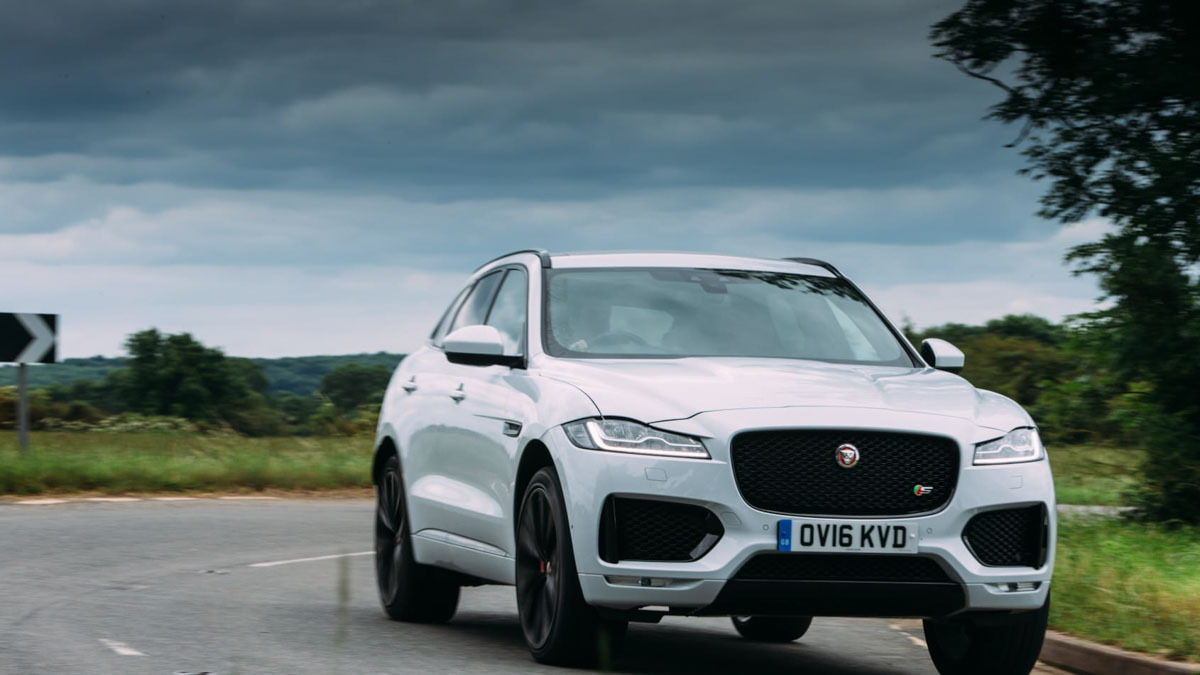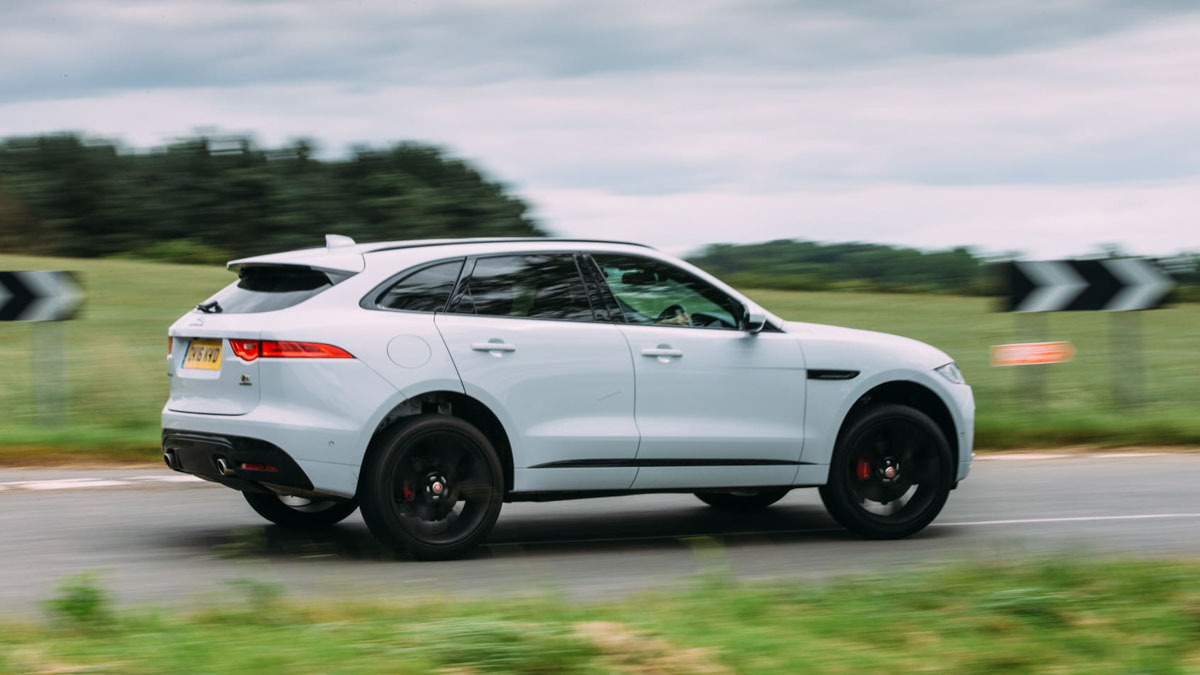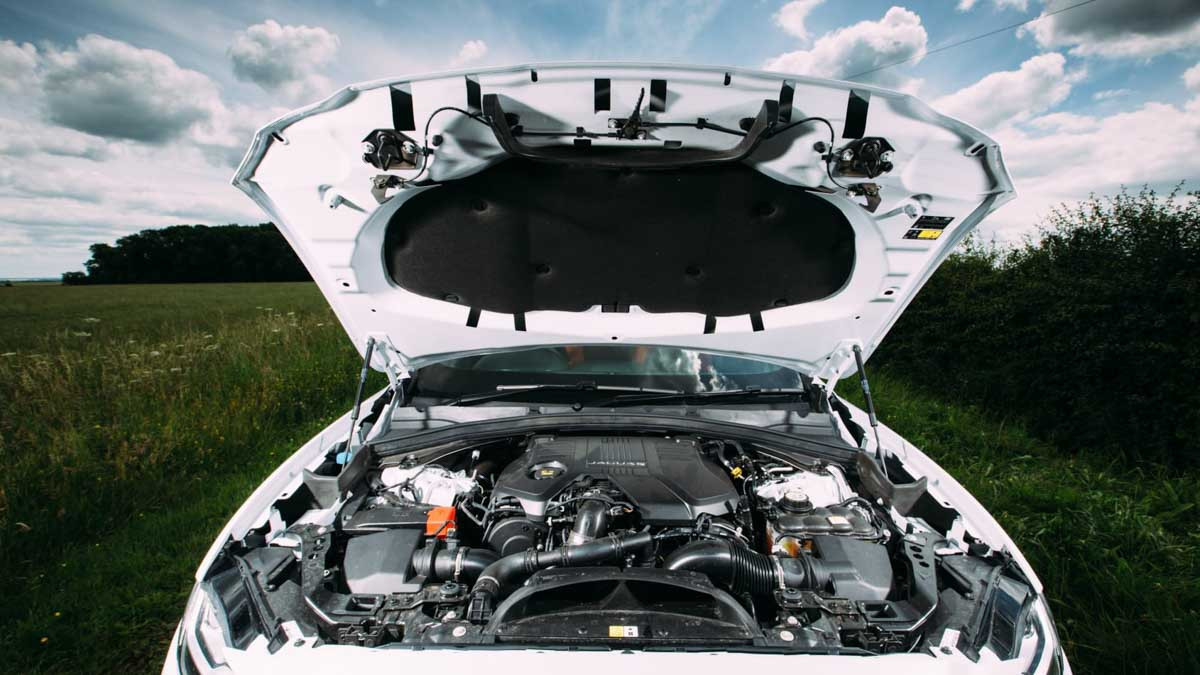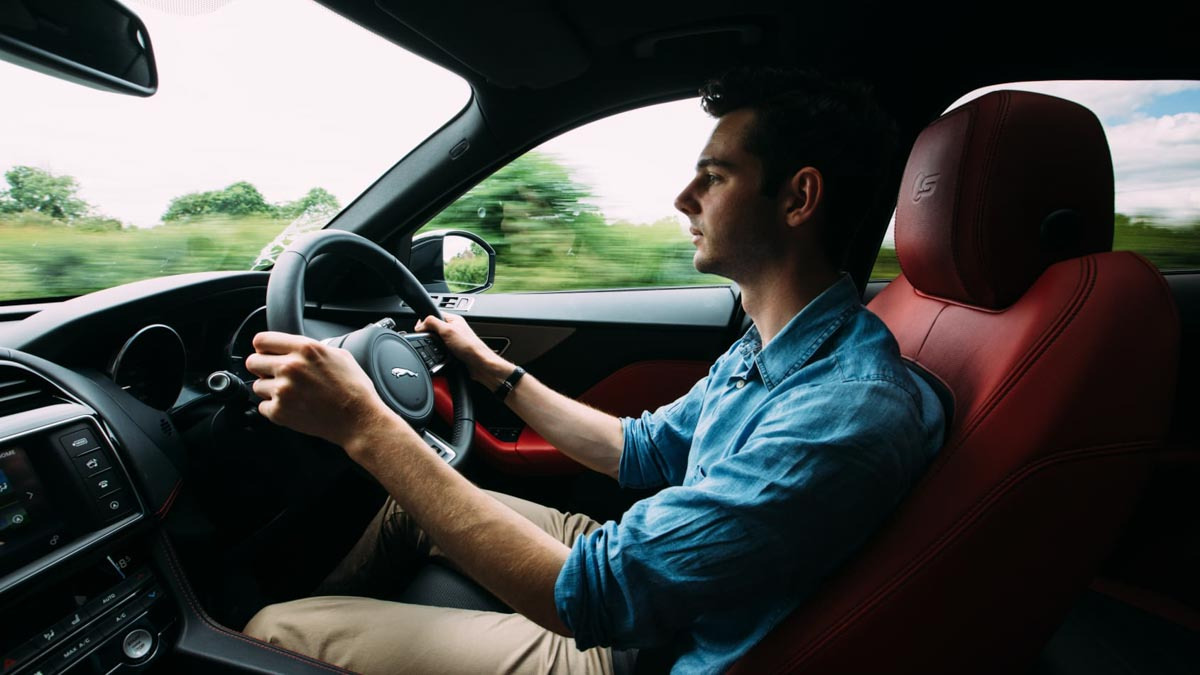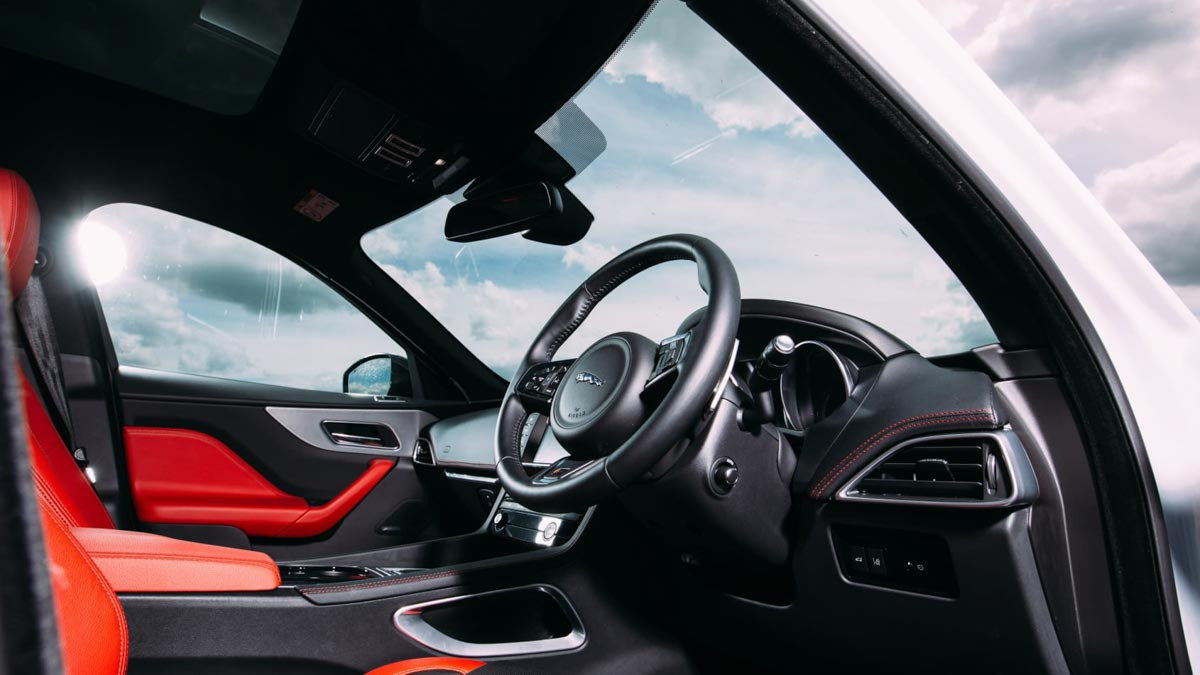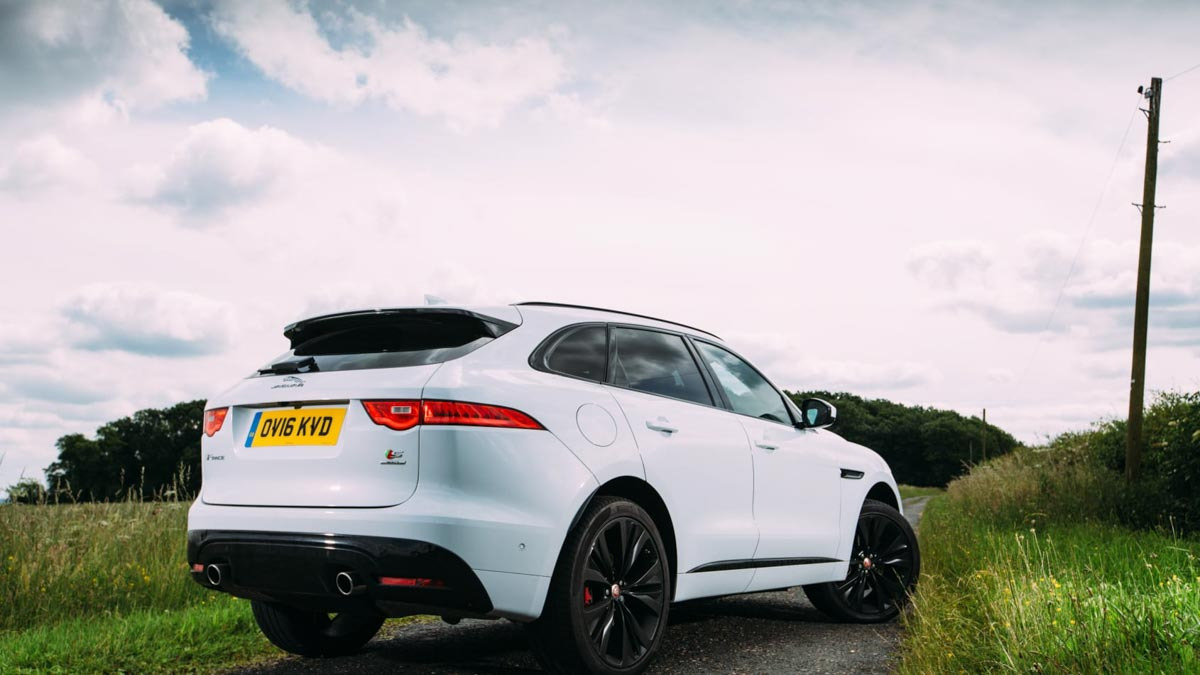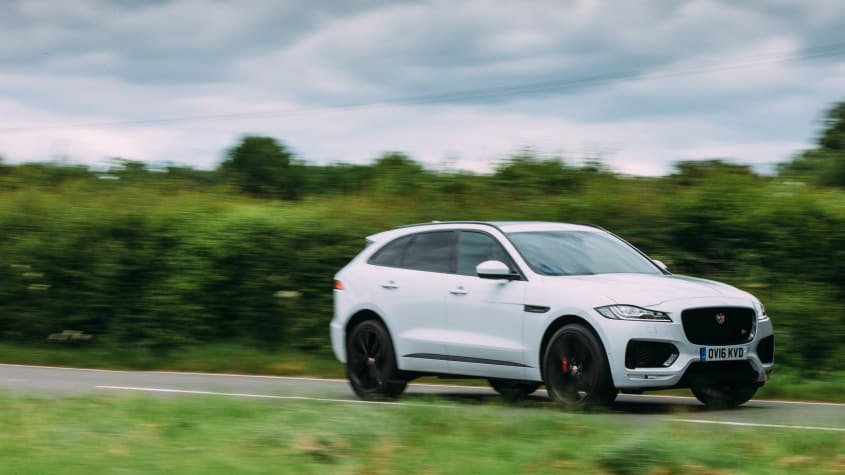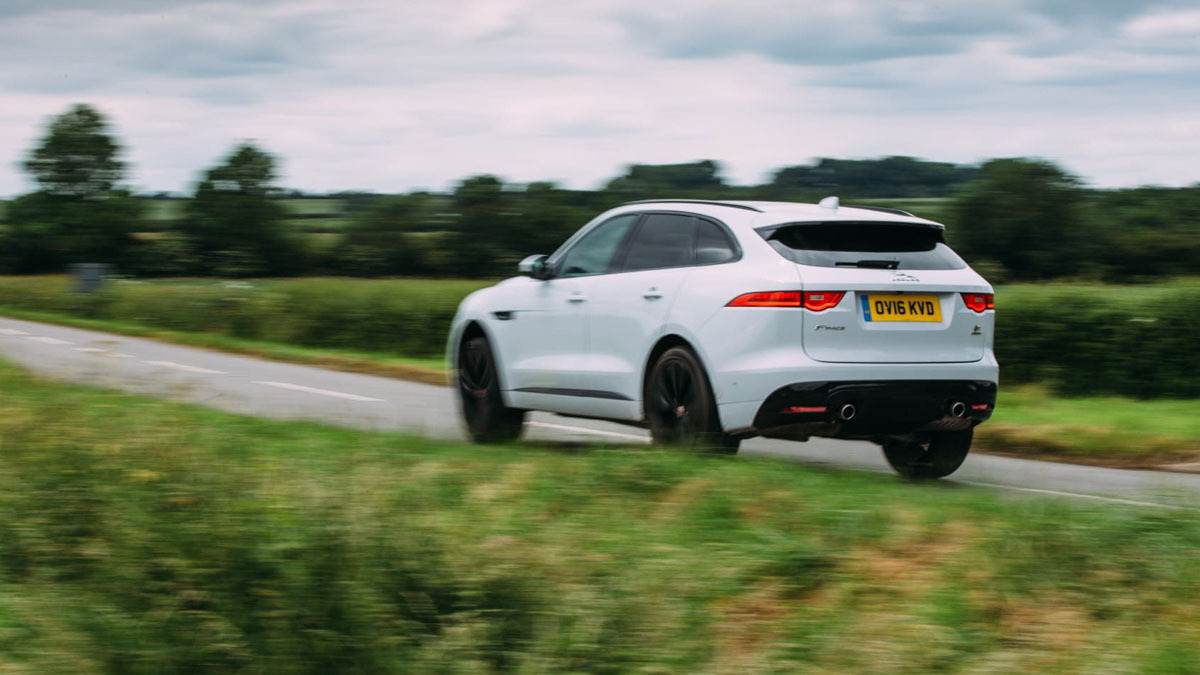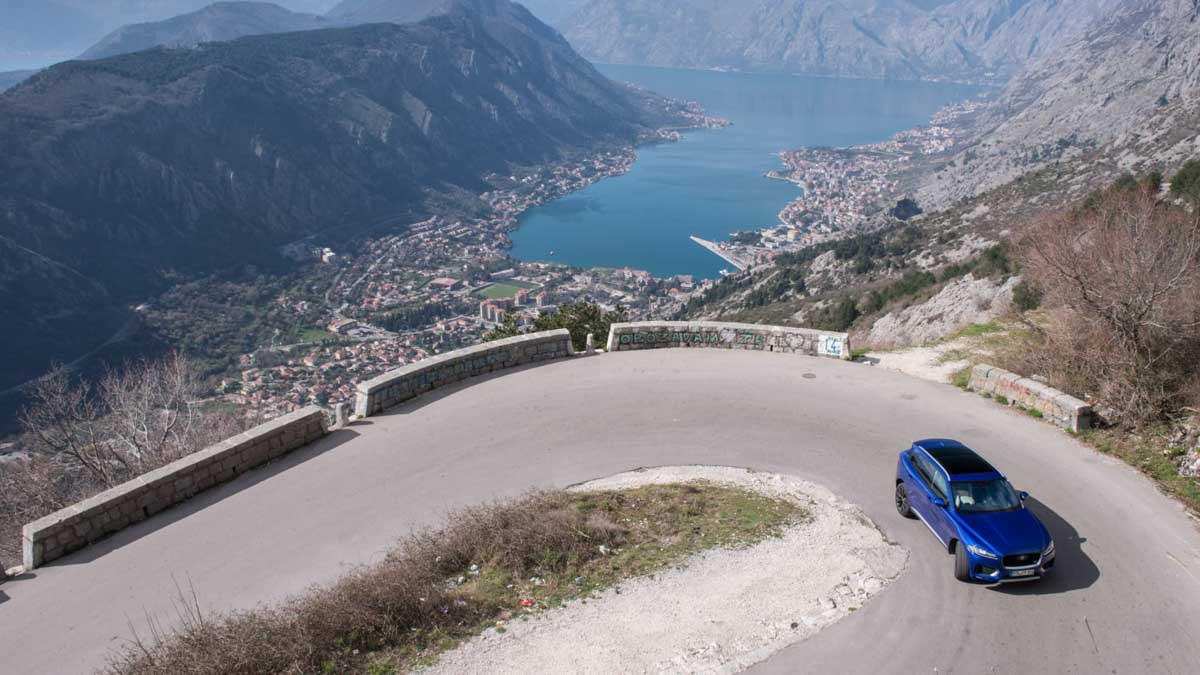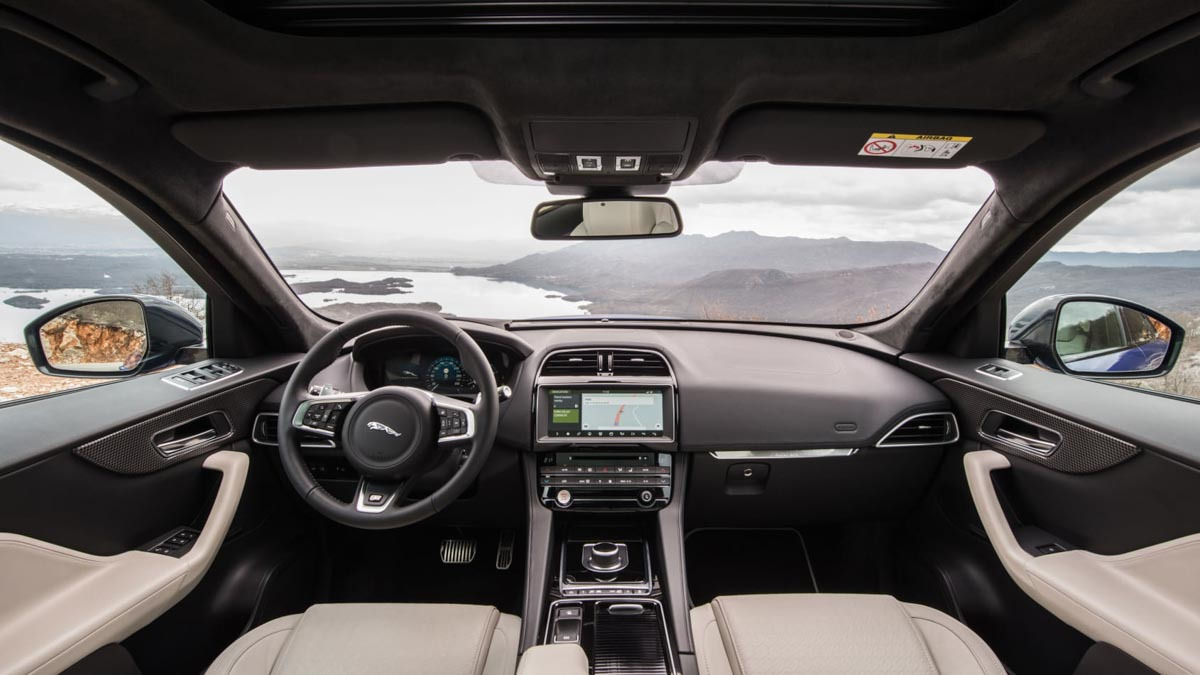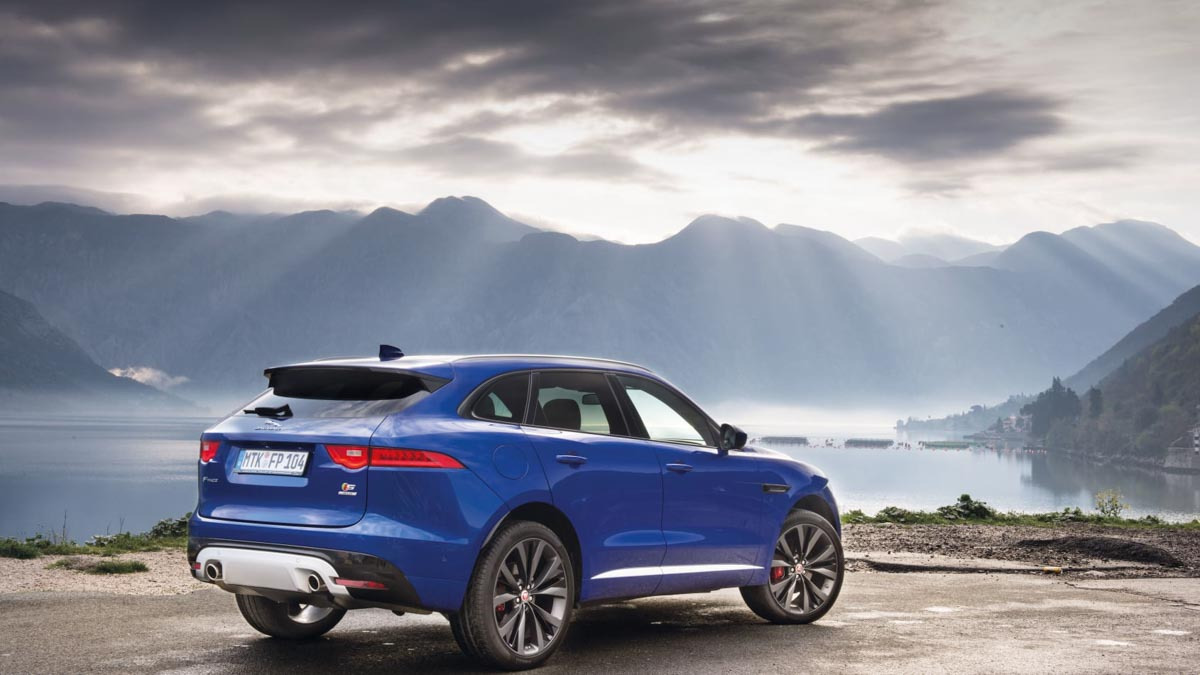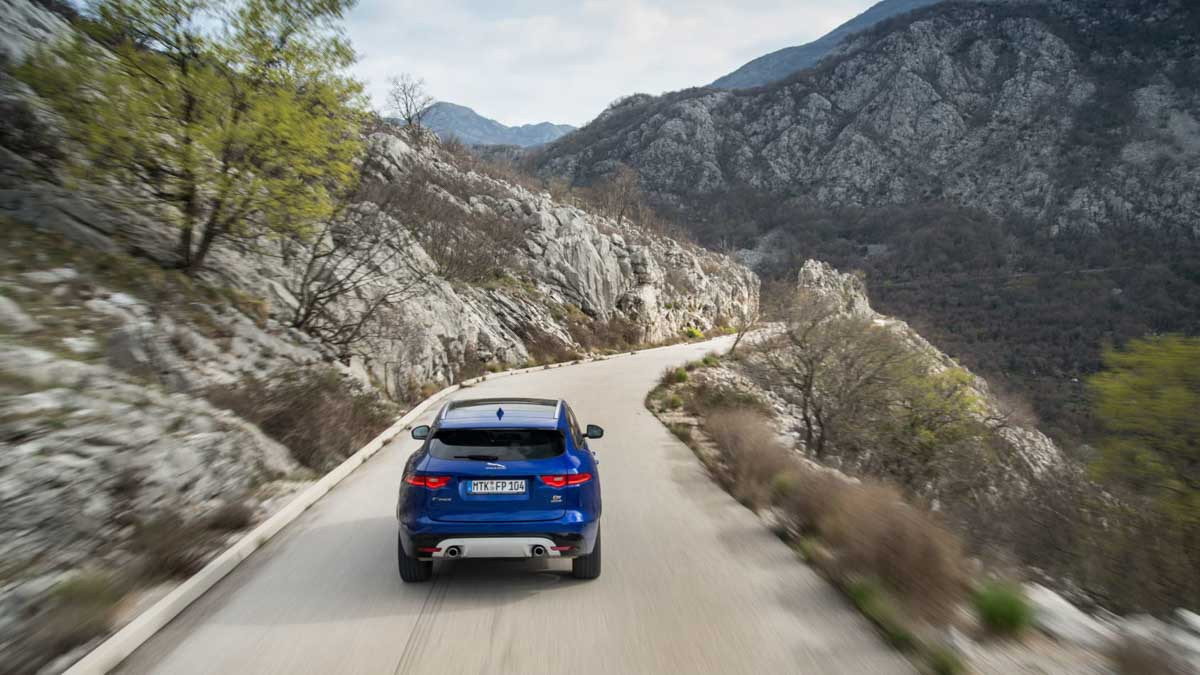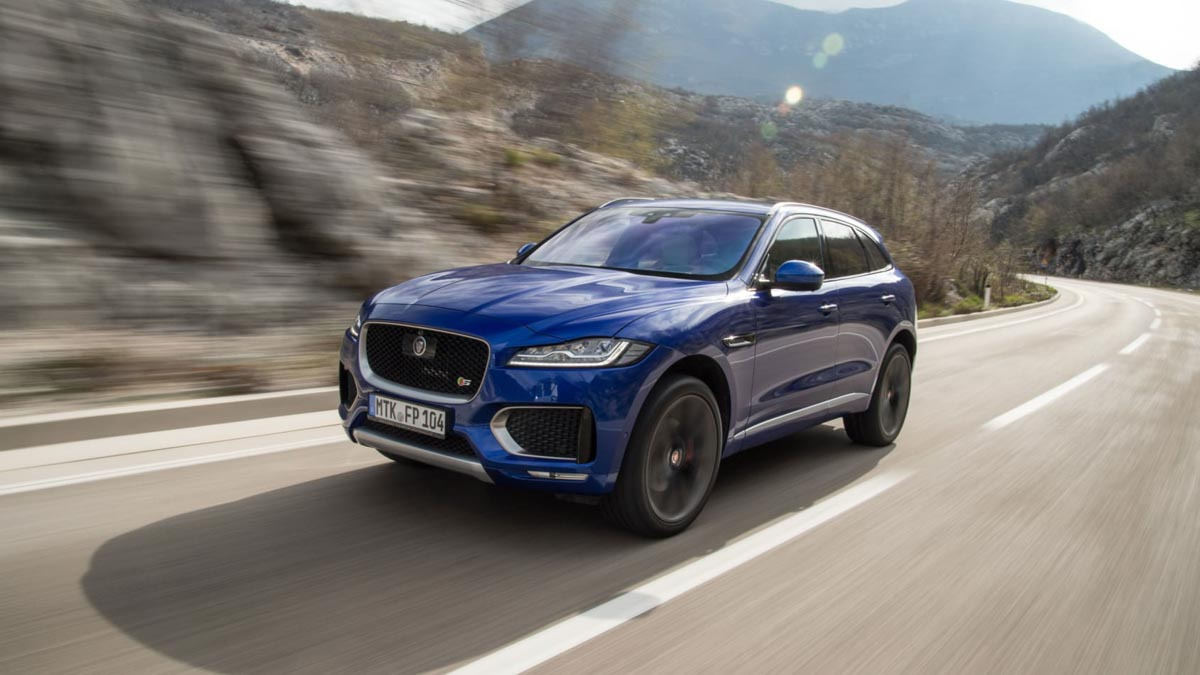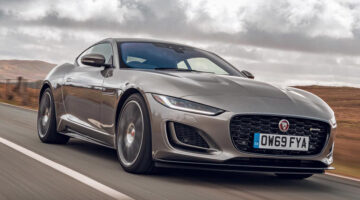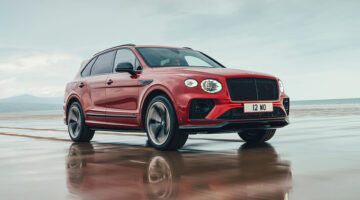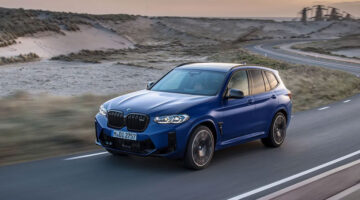The F-Pace’s armoury is well equipped to take on the Porsche Macan
PRICE from $50,800
| An involving drive, and not just for an SUV | |
| Most powerful engine is slightly lacklustre |
It would be easy to dismiss the Jaguar F-Pace as merely a bland, boring SUV – one of many new jacked-up crossovers, only more premium. But that would be a mistake, as Jaguar’s 4×4 is one of the most accomplished SUVs we’ve ever got behind the wheel of. It rivals the Porsche Macan, both overtaking the Cayenne, for the SUV top spot. It exhibits poise and composure down demanding B-roads and, when threading it through corners, it’s truly involving as the four-wheel drive system perceptibly hunts for grip. We’d even go as far to say that it’s actually fun, even if it isn’t quite as engaging as a well-sorted estate or saloon.
> Jaguar F-type R 2020 review – supercharged V8 coupe takes the fight to Porsche’s 992
A lot of the F-Pace’s athleticism comes from its underpinnings, some of which it borrows from Jag’s sportiest model, the F-type. It doesn’t, sadly, get the sports car’s supercharged V8, yet. But, the V6 engines that are available are decent, especially the 3-litre diesel that suits the F-Pace well.
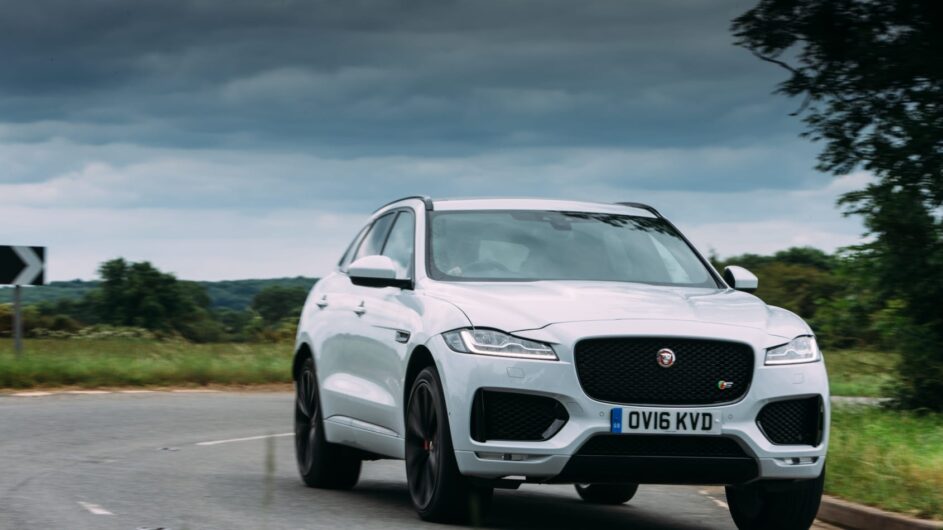
Prices, specs and rivals
Opening the F-Pace range is a rear-wheel drive, 2-litre diesel in R-Sport trim, priced just under $51k. Above that, the Portfolio trim can be had with various exterior tweaks such as xenon headlights and LED DRLs. Then comes the S trim, adding features such as 20″ wheels, more aggressive styling, larger brakes, an uprated Meridian sound system and more. At the very top of the range sits the $90k F-Pace SVR, featuring JLR’s 5.0-litre supercharged V8 for a power output of 542bhp.
All F-Pace models apart from the two entry-level powertrains come with an automatic transmission and an all-wheel-drive system. The cheapest trim to feature all-wheel-drive is the 178bhp 2-litre diesel R-Sport, costing around $53k.
The 25d and 30d diesel derivatives deliver considerably more performance producing 237bhp and 296bhp respectively. The former sits at just over $57k, whereas the latter breaches $60k. The 25t is the cheapest of the three petrol powered versions and is similarly priced to the 25d but isn’t as economical. The range-topping 3-litre S AWD is almost $64k, some $12k more than the 30t AWD.
> Click here for our Porsche Macan review
The Jaguar F-Pace occupies a space in the jam-packed premium midsize SUV market where Porsche reigns supreme. Entry to the Porsche Macan range is about $12k above that of the F-Pace, but justifiably so – the base Macan is more potent, automatic and four-wheel drive. That said, an equivalent F-Pace would still come in a few thousand pounds cheaper. There’s little to separate the Jaguar and Porsche in terms of dynamics as the two are the most engaging to drive in class.
The BMW and the Audi Q5 were cited as benchmarks in the initial development phase of the F-Pace before Jaguar refocused its attention on the Macan. The Audi Q5 is undoubtedly a great machine, featuring the solid build quality you’d’ expect from an Ingolstadt product, but it can’t provide you with as much satisfaction behind the wheel as the F-Pace. Nor are the BMW and Audi priced as competitively as the F-Pace – both will cost at least $48k once you specify just a few options-and or packages.
Our first drive of the Alfa Romeo’s new Stelvio shows signs that it could be a contender for the small SUV crown. The 2-litre four-cylinder petrol powered model that we had access revealed the Stelvio to be a premium feeling, fun car. However, the 503bhp Quadrifoglio version that Alfa has promised to make will be the car that gets both Jaguar and Porsche worried.
Performance and 0-60 time
The range topping 375bhp, 3-litre, supercharged V6 will reach 100kph in just 5.1sec, which for an 1861kg SUV is impressive. However, it’s is only fractionally quicker – 0.1sec to be exact – than Porsche’s Macan GTS and the Jaguar’s top speed is limited to 250kph.
The V6 diesel features twin-turbochargers with the 3-litre unit producing 296bhp and a mighty 516lb ft of torque. It isn’t as quick as the petrol against the clock, reaching 100kph in 6.2sec and going on to a 241kph top speed, but that mid-range turbocharged torque makes it feel the quickest of the range in day-to-day driving.
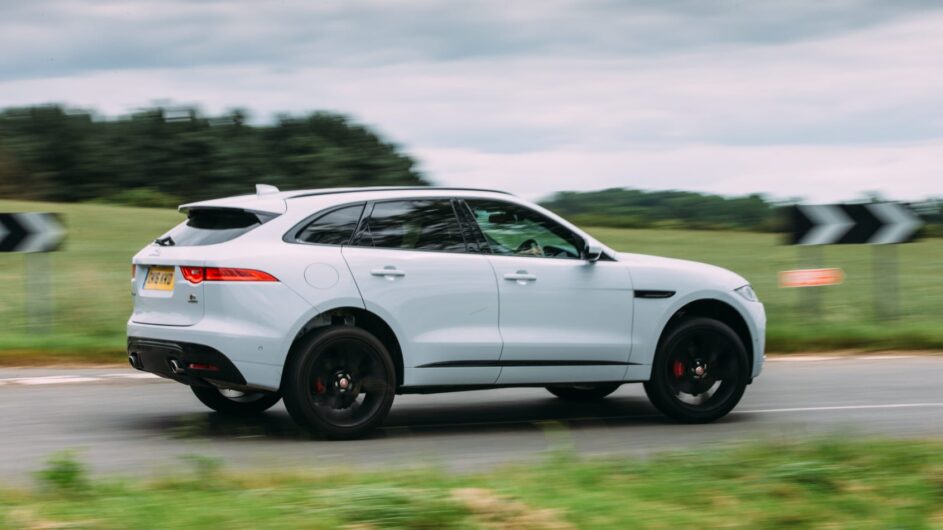
The F-Pace is also available with a 178bhp four-cylinder, 2-litre, turbo-diesel and will reach 100kph in 8.9sec and top 209kph if ordered with a six-speed manual gearbox and rear wheel drive. Go for the optional four-wheel drive drivetrain with the excellent eight-speed ZF automatic gearbox and you’ll cut two-tenths from the 0-100kph time, but lose 2kph at the top end.
The V6 engined models are only available with all-wheel drive and the eight-speed automatic gearbox.
Engine and gearbox
The 3-litre V6 turbo-diesel might not be the most characterful engine, but it’s functional and incredibly flexible. Keep it between 2500 – 4000rpm, which is easy thanks to the plethora of gears in the 8-speed automatic gearbox, and you can make swift progress. Rev it out to its limiter and, although the noise isn’t unpleasant – it’s much nicer than you’d expect from a diesel – there’s not much to be gained in terms of performance.
The top-spec, supercharged V6 might produce some impressive numbers, but it isn’t quite as impressive to use. It needs revving hard to feel the benefits of the power on offer, a task not befitting for an SUV. If you aren’t working the supercharged V6 hard, then the diesel – with its additional 184lb ft of torque – is faster from A to B.
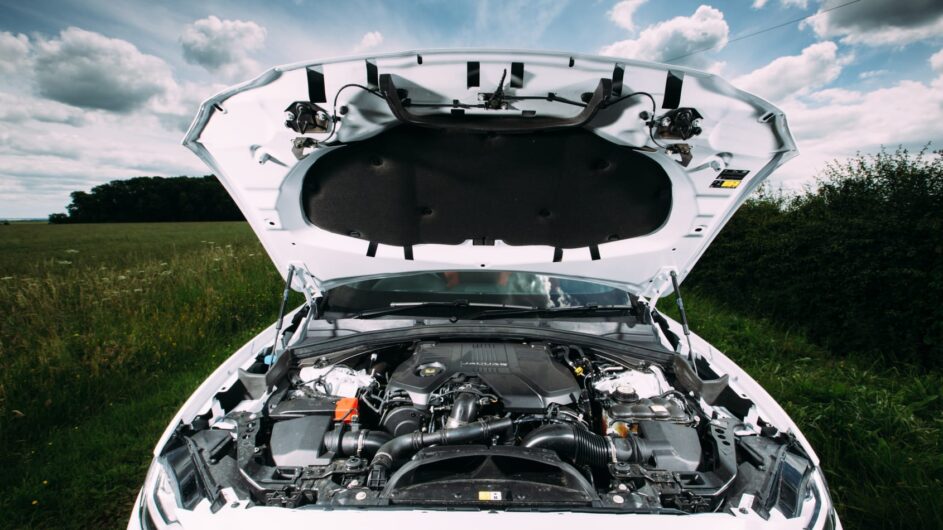
The volume seller will be the 178bhp 2-litre turbo-diesel, which while not as quick nor as flexible as its six-cylinder relatives it has just enough performance to avoid frustration. The manual may appeal to the die hard driving enthusiasts but the eight-speed auto is more naturally suited to the F Pace.
The F-Pace has a number of driving modes from eco, through normal to dynamic. The throttle map and automatic gearbox’s shift points and speeds are changed dramatically in the sportiest mode.
evo Tip
It may not be the most powerful engine available, but we think the 3-litre, twin-turbocharged V6 diesel suits the F-Pace better than the supercharged, petrol V6. Its huge torque figure delivers the performance that works best with an SUV, and it suits the rest of the Jaguar’s character, too.
That is until Jag’s 5-litre V8 worms its way into the front of the F-Pace, which it inevitably will. Then, we’ll undoubtedly change our minds.
Ride and handling
The F-Pace does not ride like a plush, luxurious, premium SUV; it is no Range Rover after all. Instead, the body control is tense and the ride is relatively firm, but the result of the slightly-less-than-comfortable ride is a very agile machine and remarkable body control.
Turn in hard and the F-Pace stays uncharacteristically flat and level for an SUV. Unless you’re too aggressive with the steering, there’s no understeer, but a little bit of trail braking brings the rear around even more readily. With the nose tucked in you can get on the power early in the corner and catapult yourself away from the exit.
The four-wheel drive system initially favours the rear axle, and you can certainly feel the back tyres dealing with the extra torque. Moments after hitting the throttle – the diesel V6 can need a bit of time to react – the rear begins to push the back around. In slower corners, where the acceleration is more pronounced, the front tyres are called in to help and you start to feel them nibble away at the tarmac.
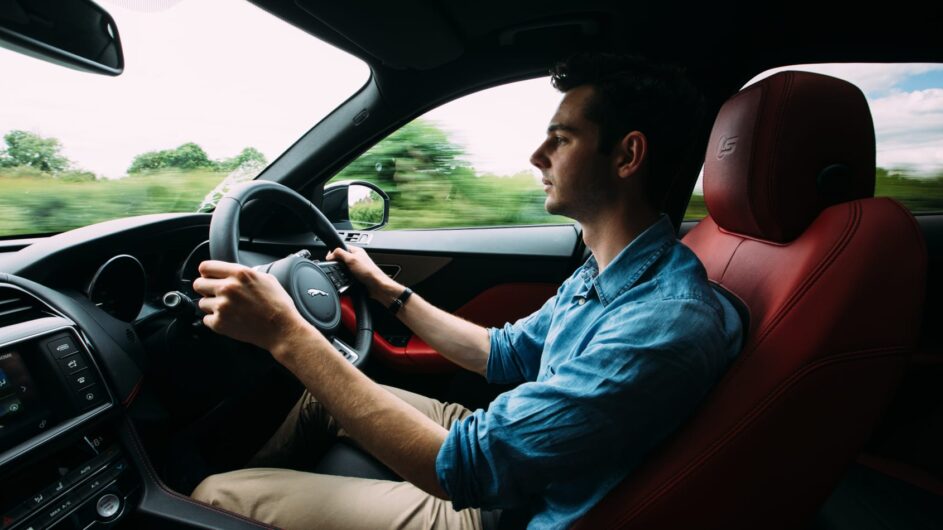
The tyres chirp and squeal in protest as they struggle to keep the tall Jag on line, but they do withstand a lot of punishment. Turn all the systems off, rely purely on mechanical grip, and the F-Pace feels much the same. However, the rear will give up first; not dramatically, as the front tyres are always called upon to reign in any truly exuberant behavior, but enough to be able to use the throttle to manipulate the F-Pace’s handling attitude.
It might not be as seamless or as sophisticated as the best and most advanced four-wheel drive systems, but the F-Pace’s drivetrain makes it more involving than its rivals. The tangible amounts of adjustability that it serves up aren’t only impressive for a SUV, but it trumps many four-wheel drive saloons and hatchbacks, too.
That’s not to say the handling hasn’t been compromised by its lofty ride-height, though; at the very limits, when you ask a lot of the F-Pace, it doesn’t quite maintain its composure. Large crests taken at speed expose its weight, which is usually so well hidden, and really tight corners do induce a touch more body roll than feels appropriate.
The F-Pace is very impressive to drive though; it’s controlled, involving and very fast. Although Jaguar haven’t completely defied physics, they’ve done a fine job of getting close.
evo Comment
‘It doesn’t take far to appreciate just how good the F-Pace is. It’s one of those cars that you can get into and drive with no requirement to adjust to any idiosyncrasies or learn to read its feedback. It feels as natural to drive as an F-type.’ Stuart Gallagher, Managing editor
L/km and running costs
Unsurprisingly, the two-wheel drive, four-cylinder version of the F-Pace is the cheapest to run. It has an official combined fuel consumption figure of 4.9L/100km. The addition of an auto ‘box and all-wheel drive sees that figure drop to 5.3L/100km.
The V6 engines aren’t quite as frugal; the diesel achieves 6L/100km while the supercharged petrol’s official figure is 8.9L/100km.
If you’re buying an SUV, you’re probably not going to be that fussed about L/km as they are never the most economical of cars. One of the big expenditures will be tyres, especially if you order the optional 22-inch wheels. They might look great, and the ride might not be too badly effected by the low profile tyres, but a set of replacement 265/40 17 Pirelli P Zeros cost approximately $300. Each.
Interior and tech
The F-Pace’s interior is neat and functional, if not the most exciting of places to be. Our test car was fitted with optional red leather for the outer edges of the sports seats, which added a bit of drama but it’s mostly quite ordinary and very Jaguar inside. And despite being sports seats, they lacked the support expected of them.
The lack of interior switchgear creates a minimal, tidy design inside the F Pace, but it does mean you have to rely on the infotainment screen to control many of the functions, with this requiring you to enter a number of sub-menus before adjusting what you need to. Sadly, the screen is slow to react to inputs, which is incredibly frustrating. What’s more, it just isn’t as intuitive as using physical buttons and it demands too much attention to operate when you’re driving.
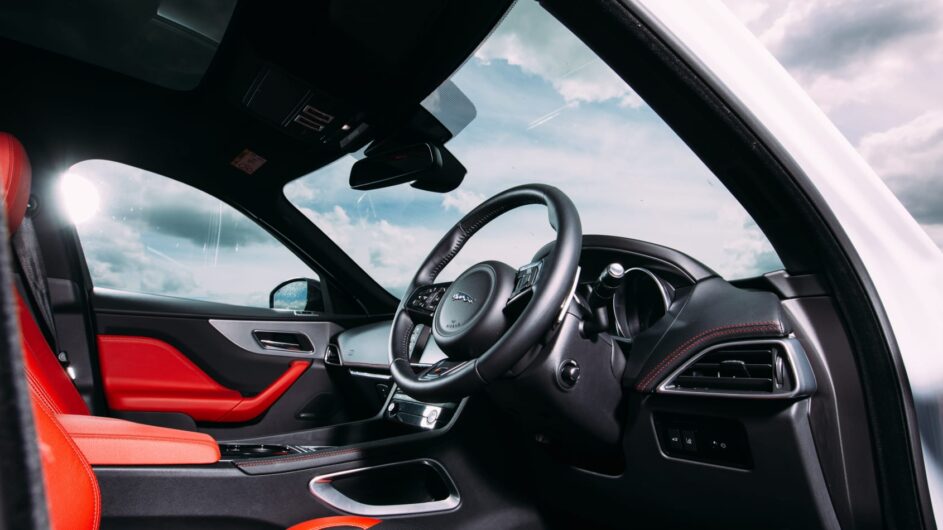
The way the dial like gear selector rises from the centre console when you start the car is still brilliantly theatrical. If you’re used to other infotainment systems, such as those from BMW or Audi, that rely on a dial to navigate around, you may accidentally put the gearbox into neutral when all you wanted was to zoom-in on the satnav map.
Design
It could just be that the F-Pace is new, it attracts a lot of attention on the road. During our test people stared, took pictures and asked plenty of questions anytime we were parked. Which is good news for Jaguar dealers.
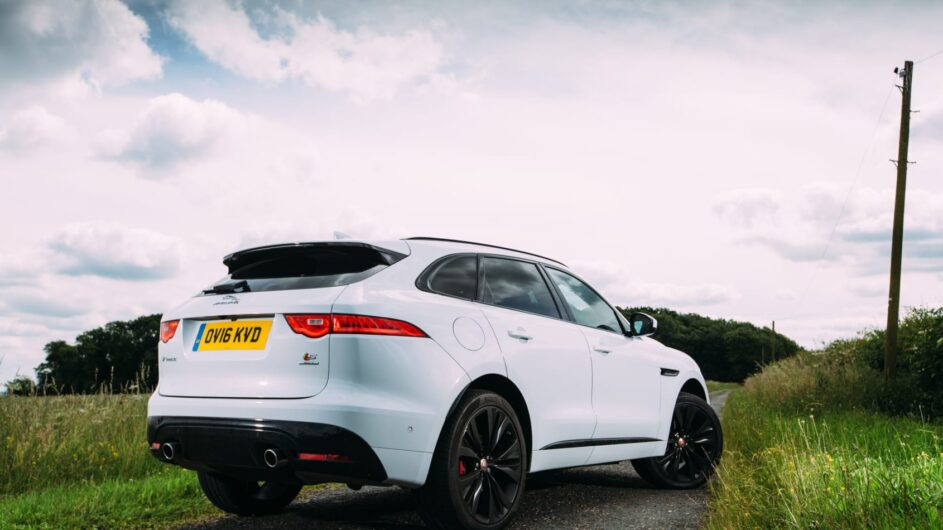
To our eyes it’s an elegant looking car, and although the 22-inch wheels might seem ludicrously big in concept, they really suit the F-Pace. Jaguar’s design language has been adapted well, and it fits within the current range while still looking far more individual than Jaguars current saloon models.
This article originally appeared at evo.co.uk
Copyright © evo UK, Dennis Publishing

